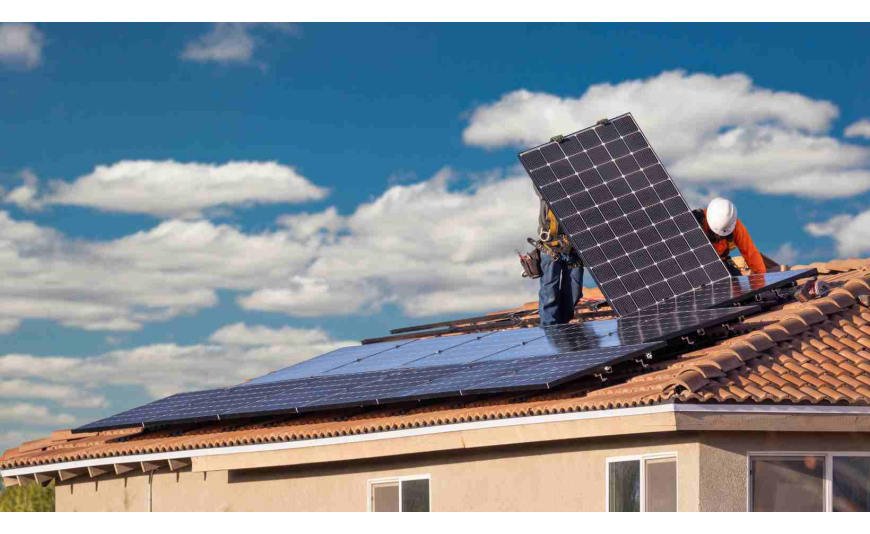Essential Solar Panel Accessories: Everything You Need to Know
- 20 Feb, 2024
- Help

The accessories of your installation are as important as the solar panels themselves. Whether you're considering installing a system on your roof, carport, facade, or ground, choosing the right accessories is essential. Discover in this article an exhaustive list of essential accessories for your solar project, along with practical tips for a successful installation.
Solar Inverters: Convert Solar Energy into Alternating Current
Solar panels produce direct current, but our devices generally operate on alternating current. This is where solar inverters come in, effectively converting DC to AC. Two types of inverters are commonly used: string inverters and microinverters. String inverters are connected in series to solar panels, while microinverters are installed individually on each panel. Although both options have their advantages, microinverters generally offer better performance, albeit at a higher cost.
Solar Batteries: Store Energy for Continuous Use
For total self-consumption and continuous power, especially at night or on cloudy days, you'll need solar batteries. They store the energy produced by your solar panels for later use. There are several types of solar batteries, including lithium, flooded, AGM, and gel, each with its own advantages and disadvantages. Lithium batteries are often preferred for their durability and efficiency, but flooded lead-acid batteries remain an affordable option for less demanding applications.
Wires, Cables, and Solar Connectors: Ensure Reliable Connection
An efficient solar system requires proper wiring to connect all components. Wires, cables, and solar connectors are essential to ensure efficient energy transmission between solar panels, batteries, and inverters. MC4 connectors are widely used in solar installations due to their reliability and efficiency.
Charge Controller: Manage Energy Flow
The charge controller plays a crucial role in managing energy flow between solar panels and batteries. Two types of controllers are popular: MPPT and PWM. The choice of charge controller depends on the capacity of your solar system and your specific energy needs.
MPPT charge controller is more advanced and efficient than PWM controller. It uses sophisticated technique to adjust the voltage and current of solar panels in real time to maximize power output. In other words, it constantly optimizes the performance of solar panels based on weather conditions and sunlight intensity. This allows for more efficient conversion of solar energy into electricity, resulting in higher energy production, especially on cloudy days or when panels are partially shaded.
On the other hand, PWM charge controller regulates the voltage of solar panels by modulating the width of electrical pulses. Although less complex than MPPT controller, it is more affordable and suitable for small to medium-sized solar installations with stable sunlight conditions. However, PWM controller is less efficient than MPPT controller in variable light conditions or when panels are partially shaded.
Monitoring Equipment: Monitor Your System in Real Time
Monitoring system offers you the ability to monitor the performance of your solar installation in real time. From solar panel monitors to battery monitors, these tools provide valuable data to optimize the efficiency of your system. Some brands offer connected applications to control and optimize the electricity production of your panels.
Racking Supports: Install Your Panels Safely
Racking supports are essential structures used to install solar panels on a roof or ground. Their main role is to provide a solid and secure support for the panels, while ensuring their optimal orientation relative to the sun to maximize energy production.
There are different types of racking supports, each adapted to specific configurations and installation conditions. These supports may include a variety of components such as end caps, wiring clips, rails, brackets, and other accessories.
It is important to note that the support structure must be carefully chosen and installed to ensure the safety and durability of the solar installation. Before installing racking supports, it is recommended to conduct a thorough inspection of the roof or installation site to ensure it can support the weight of the panels and supports, as well as local weather constraints such as wind and snow.
Most solar racking supports are made of aluminum, making them both lightweight and sturdy. Once installed, these supports provide a solid foundation for solar panels, reducing the risk of damage from weather conditions or vibrations.
Choosing the right accessories for your photovoltaic installation may seem daunting, but with the right information, you can make informed decisions. Be sure to conduct thorough research and select quality equipment for a successful and durable solar installation. Our commercial service located in Luxembourg is at your disposal to answer all your questions, and speaks your language.




